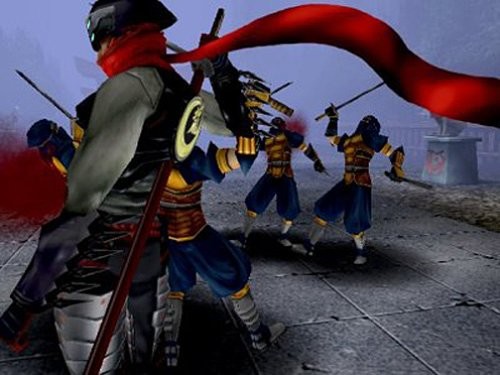SEGA is no stranger to trying to relaunch its classic franchises. At the dawn of the PlayStation 2 era, the success of the hardcore action classic Devil May Cry jump-started some designer’s memory, and he stumbled into work on a Monday morning, reminding his c0-workers that SEGA indeed owned its own classic badass ninja IP. With Capcom already laying out the blueprints of how action games would be handled for the next two decades, all that was needed was a simple “copy and paste” job, right?
Not so much. SEGA tapped its fabled Overworks division to handle the reboot of this classic franchise, and it couldn’t have been any more different from Capcom’s masterpiece. Good for the game’s lasting reputation, ill for the critical reception and dashed expectations upon its launch.
Devil May Cry might have set the bar a little too high in this case, blending elements of pure action with the exploration and puzzle solving of adventure games like Resident Evil and The Legend of Zelda. Hidden treasures, keys, secret missions. No such thing in SEGA’s PlayStation 2 cult classic. Overworks delivered an arcade hit very much in line with the classics that came before it, only with a modern coat of paint.
Items provide a slight reprieve from sword combat, but, by an large, combat is a simplistic affair, dodging enemies with a combination of double jumps, dashes, and wall-runs before finally getting in that strike. Quickly killing enemies in succession powers our hero’s sword to the point where it can slay even a boss in a single slash, but not killing anything slowly drains his life away. This pressure forces very little exploration and constant motion towards the end point, causing many to criticize the linear level design.
A huge “no-no” in the RPG dominated world of 2002.
The game holds very direct paths from beginning to end that only seemed longer thanks to a punishing difficulty curve and very little tolerance towards death. If you die, it’s back to a checkpoint, and if you run out of lives, Overworks ships your butt back the beginning of the level. I’ve broken two controllers in my life, and this game caused one of them.
Tying the whole game together was actually a cosmetic decision and a fancy little piece of tech that allowed a free-flowing scarf to follow the lead ninja’s every move. No, it didn’t add anything to the gameplay, but I stand by my belief that this game wouldn’t be the same without that amazing red scarf.
Needless to say, this excellent little title was lost in the folds and overshadowed again when Tecmo destroyed it with Ninja Gaiden not long afterwards. Playing a little too close to arcade conventions caused it to be horribly misunderstood, but thanks to a re-emergence of simple games and old-school design, it might have a chance to succeed if modern audiences gave it a shot.
Other interesting things this game spawned was an even more misunderstood sequel, a killer soundtrack, and the best television spot of all time. Warning: each of these links holds spoilers for the title.
Alright, then… guess the game!
















